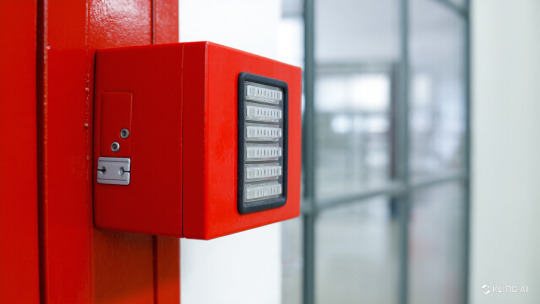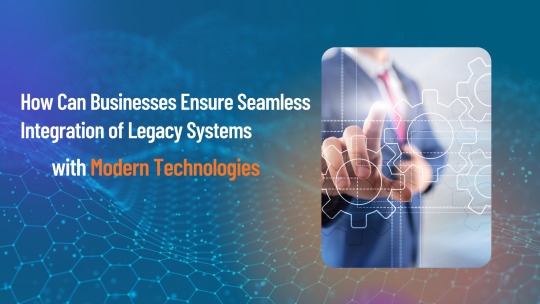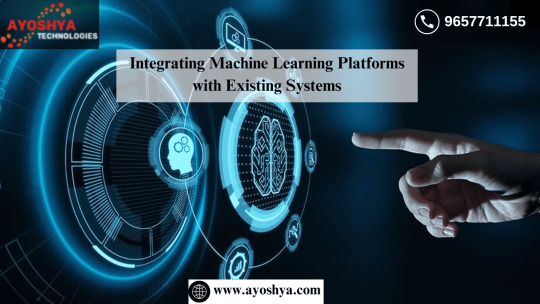#Systemintegration
Explore tagged Tumblr posts
Text

Dismantling old laptops is fun.
Putting them back together is a bit more difficult.
On a totally unrelated note, I suddenly acquired 6 extra screws!
It's like Christmas!
#IT#Laptop#Dismantling#Systemintegration#Practicing#It's an old laptop so it's fine if it doesn't work anymore
2 notes
·
View notes
Text
For a high-quality software application delivery, use our software application testing solution. For more details, visit: https://briskwinit.com/software-product-testing/
#softwaretesting#testingserviceinindia#automation#softwareregressiontesting#systemintegration#testingservices#softwaretestingservices#softwaretestingcompany#bugfree#retesting#useracceptancetesting
5 notes
·
View notes
Text
So wird ein Feueralarmsystem installiert – Alle Komponenten erklärt

Ein Feueralarmsystem umfasst Brandmelder wie Rauch- oder Wärmesensoren, die ständig nach Anzeichen eines Feuers überwachen und mit einem Bedienfeld verbunden sind, das Signale verarbeitet und Alarme steuert. Manuelle Auslösevorrichtungen ermöglichen es den Bewohnern, Alarme manuell auszulösen, während Benachrichtigungsgeräte wie Hupen und Blitzleuchten alle warnen, um das Gebäude zu evakuieren. Das System basiert auf Hauptstromversorgung mit Batterierückständen, um den Betrieb bei Stromausfällen zu gewährleisten. Die Integration mit Gebäudesicherheitssystemen verbessert die Reaktion. Weitere Details zeigen, wie jede Komponente umfassenden Schutz gewährleistet.
Brandmeldesysteme umfassen Detektoren (Rauch, Hitze, Flamme), die strategisch für eine frühzeitige Branderkennung und kontinuierliche Überwachung platziert sind.
Manuelle Handfeuermelder sind in der Nähe von Ausgängen installiert, damit Bewohner im Notfall Alarme auslösen können, was einen schnellen und sichtbaren Zugang gewährleistet.
Benachrichtigungsgeräte wie Signalhörner und blinkende Lichter warnen die Bewohner akustisch und visuell und decken alle Gebäudebereiche für eine inklusive Warnung ab.
Steuerzentralen koordinieren Detektorsignale, verwalten Alarme und sind mit einer Notstromversorgung verbunden, um einen kontinuierlichen Betrieb bei Stromausfällen zu gewährleisten.
Die Integration mit Sprinkleranlagen, Lüftungs- und Sicherheitssystemen verbessert die Brandreaktion, während regelmäßige Wartung und zuverlässige Stromversorgung die Systemeffektivität sichern.
Verständnis der Brandmeldegeräte
Obwohl Brandmeldegeräte in Technologie und Anwendung variieren, bleibt ihre Hauptfunktion konsistent: die schnelle Erkennung von Feuer oder Rauch. Diese Geräte sind wichtige Komponenten in Brandalarmsystemen, die eine frühzeitige Warnung ermöglichen und eine rechtzeitige Evakuierung erleichtern. Zu den gängigen Typen gehören Rauchmelder, die luftgetragene Partikel erkennen, die bei der Verbrennung entstehen, und Wärmemelder, die auf Temperaturänderungen reagieren. Rauchmelder sind oft optisch oder ionisationsbasiert, wobei jeder Typ für unterschiedliche Umgebungen geeignet ist. Wärmemelder werden aktiviert, wenn eine vorgegebene Temperaturschwelle oder ein bestimmter Temperaturanstieg erreicht wird. Fortschrittliche Systeme können Flammendetektoren integrieren, die spezifische Lichtwellenlängen erkennen, die von Feuer ausgestrahlt werden. Die richtige Platzierung und Wartung dieser Geräte sind für einen zuverlässigen Betrieb unerlässlich, um eine schnelle Erkennung zu gewährleisten und Fehlalarme zu minimieren. Durch die kontinuierliche Überwachung von Umweltveränderungen, die auf Feuer hinweisen, bilden Detektionsgeräte die Grundlage effektiver Brandschutzstrategien und schützen Leben und Eigentum durch frühzeitige Alarmmechanismen.
Rolle von manuellen Druckknöpfen
Manuelle Handfeuermelder sind ein entscheidendes Element zur manuellen Auslösung von Feueralarmen in Notfallsituationen. Ihre strategische Platzierung gewährleistet einen schnellen und einfachen Zugang für die Bewohner und ermöglicht eine zügige Reaktion. Darüber hinaus sind diese Geräte in umfassendere Feueralarmsysteme integriert, um Warnungen und Sicherheitsprotokolle effizient auszulösen.
Funktion und Zweck
Manuelle Auslösegeräte sind entscheidende Komponenten in Brandmeldesystemen, die es den Gebäudenutzern ermöglichen, im Notfall schnell einen Alarm auszulösen. Ihre Hauptfunktion besteht darin, eine einfache, manuelle Methode zur Aktivierung des Brandmeldesystems bereitzustellen, wenn ein Feuer oder eine Gefahr erkannt wird. Diese sofortige Aktivierung warnt die Gebäudenutzer und Einsatzkräfte, was eine umgehende Evakuierung und Reaktion ermöglicht. Im Gegensatz zu automatischen Detektoren sind manuelle Auslösegeräte auf menschliches Eingreifen angewiesen, wodurch Alarme auch dann ausgelöst werden können, wenn Rauch- oder Wärmesensoren einen Vorfall nicht erkennen. Sie fungieren als Sicherheitsnetz und unterstützen die Zuverlässigkeit des Gesamtsystems. Indem sie die Lücke zwischen Erkennung und Alarm schließen, spielen manuelle Auslösegeräte eine wesentliche Rolle beim Schutz von Leben und Eigentum und betonen ihre wichtige Funktion innerhalb umfassender Brandschutzstrategien.
Platzierung und Zugänglichkeit
Die Wirksamkeit von Handfeuermeldern hängt stark von deren strategischer Platzierung und leichter Zugänglichkeit innerhalb eines Gebäudes ab. Manuelle Handfeuermelder müssen in klar sichtbaren, erreichbaren Höhen installiert werden, typischerweise in der Nähe von Ausgängen oder entlang von Evakuierungswegen, um eine schnelle Aktivierung im Notfall zu gewährleisten. Ihre Standorte werden so gewählt, dass eine maximale Zugänglichkeit sichergestellt ist und Hindernisse oder Verzögerungen für die Personen, die den Alarm auslösen möchten, minimiert werden. Zusätzlich sollten Handfeuermelder an Orten platziert werden, die den lokalen Brandschutzvorschriften und -standards entsprechen. Eine angemessene Beschilderung und ungehinderte Zugangswege zu diesen Geräten erhöhen deren Nutzbarkeit weiter. Die Bestätigung, dass die Bewohner über die Standorte der Handfeuermelder informiert sind, trägt zu einer schnellen Alarmauslösung bei, die für eine frühzeitige Brandentdeckung und Evakuierung entscheidend ist. Insgesamt beeinflussen durchdachte Platzierung und Zugänglichkeit direkt die Zuverlässigkeit und Reaktionsfähigkeit der manuellen Brandalarmaktivierung.
Integration mit Systemen
Obwohl sie oft als einfache Komponente betrachtet werden, spielen Handfeuermelder eine entscheidende Rolle im gesamten Brandmeldesystem, da sie als direkte Aktivierungspunkte dienen, die Alarme auslösen und miteinander verbundene Sicherheitsprotokolle in Gang setzen. Wenn sie manuell betätigt werden, senden diese Stationen ein sofortiges Signal an die Brandmeldezentrale, die dann akustische und visuelle Warnsignale im gesamten Gebäude aktiviert. Darüber hinaus integrieren sich Handfeuermelder mit anderen Sicherheitssystemen wie Notbeleuchtung, Abschaltung der Lüftungsanlage und Aufzugsrückstellung, um koordinierte Reaktionen im Notfall zu gewährleisten. Ihre strategische Platzierung in der Nähe von Ausgängen und stark frequentierten Bereichen erhöht die Zugänglichkeit, sodass Personen schnell Brände melden können. Diese Integration stellt sicher, dass manuelle Alarme automatische Erkennungsgeräte ergänzen, was einen umfassenden Ansatz für den Brandschutz bietet und eine schnelle Evakuierung sowie Notfallreaktion ermöglicht.
Die Systemsteuerung: Das Gehirn des Systems
Das Bedienfeld eines Feueralarmsystems fungiert als zentrales Steuerungselement, das Signale von Detektoren koordiniert und Warnungen verwaltet. Es überwacht kontinuierlich Eingaben von Rauch-, Wärme- und manuellen Meldestellen und bewertet die Daten, um festzustellen, ob eine Alarmbedingung vorliegt. Beim Erkennen eines möglichen Feuers aktiviert das Bedienfeld geeignete Reaktionen, wie das Auslösen von Benachrichtigungsgeräten und die Benachrichtigung von Überwachungsdiensten. Moderne Bedienfelder verfügen über eine Benutzeroberfläche, die den Systemstatus, Fehlerdiagnosen und Ereignisprotokolle anzeigt und so Wartung und Fehlerbehebung erleichtert. Diese Bedienfelder unterstützen auch die Systemprogrammierung, die eine Anpassung der Empfindlichkeitsstufen, Zonen-Konfigurationen und die Integration mit anderen Sicherheitssystemen ermöglicht. Robuste Kommunikationsprotokolle gewährleisten Zuverlässigkeit und zeitnahe Datenübertragung zwischen den Komponenten. Zusätzlich sind Bedienfelder mit Sicherheitsmaßnahmen und Notstromversorgungen ausgestattet, um den Betrieb bei Stromausfällen oder Systemfehlern aufrechtzuerhalten. Als „Gehirn“ des Systems garantiert das Bedienfeld eine koordinierte, effiziente und zuverlässige Branddetektion und -reaktion innerhalb der Sicherheitsinfrastruktur eines Gebäudes.
Benachrichtigungsgeräte und wie sie funktionieren
Nach der Entscheidung des Bedienfelds, einen Alarm auszulösen, aktivieren sich die Benachrichtigungsgeräte, um die Gebäudebewohner vor potenzieller Gefahr zu warnen. Diese Geräte umfassen akustische Alarme wie Hörner, Glocken und Lautsprecher sowie visuelle Alarme wie Blitzlichter. Ihr Hauptzweck besteht darin, eine schnelle und effektive Kommunikation des Notfalls zu gewährleisten, um eine Evakuierung oder andere Sicherheitsmaßnahmen zu veranlassen.
Akustische Geräte geben laute Töne von sich, die im gesamten Gebäude zu hören sind, oft mit unterschiedlichen Signalen, um Brandalarme von anderen Warnungen zu unterscheiden. Visuelle Benachrichtigungsgeräte bieten blinkende Lichter, die für die Warnung von Personen mit Hörbehinderungen oder in lauten Umgebungen unerlässlich sind. Moderne Systeme können Evakuierungsansagen über Lautsprecher integrieren und so den Bewohnern klare Anweisungen geben.
Benachrichtigungsgeräte werden strategisch platziert, um eine maximale Abdeckung zu gewährleisten und Sicherheitsvorschriften einzuhalten. Sie funktionieren nur nach Erhalt eines Signals vom Bedienfeld, was eine koordinierte und zuverlässige Aktivierung im Notfall garantiert. Diese Integration ist entscheidend für die Sicherheit der Bewohner und schnelle Reaktionen bei Bränden.
Stromversorgung und Backup-Systeme
Ein Brandmeldesystem ist auf eine stabile primäre Stromquelle angewiesen, um effektiv zu funktionieren. Im Falle eines Stromausfalls gewährleisten Notstromoptionen wie Batterien oder Generatoren einen kontinuierlichen Betrieb. Das Verständnis dieser Stromversorgungs-Komponenten ist für eine zuverlässige Systemleistung unerlässlich.
Primärenergiequellen
Zuverlässige Stromquellen bilden die Grundlage jedes effektiven Brandmeldesystems und gewährleisten einen kontinuierlichen Betrieb sowohl unter normalen Bedingungen als auch im Notfall. Die primäre Stromquelle besteht typischerweise aus einer dedizierten elektrischen Verbindung zum Hauptstromnetz des Gebäudes, die darauf ausgelegt ist, eine stabile und unterbrechungsfreie Spannung bereitzustellen. Diese Versorgung ist entscheidend für die Stromversorgung von Detektoren, Steuerpulten und Signaleinrichtungen. Stromquelle Typ Beschreibung Hauptstromversorgung Direkte Verbindung zum Gebäudenetz Dedizierter Stromkreis Isolierte Leitung zur Vermeidung von Überlastungen Stromaufbereitung Geräte zur Aufrechterhaltung der Spannungsqualität
Diese Elemente gewährleisten, dass das Brandmeldesystem funktionsfähig bleibt und das Risiko eines Ausfalls in kritischen Momenten verringert wird. Eine fachgerechte Installation und Wartung der primären Stromquellen ist für die Einhaltung von Sicherheitsstandards und Vorschriften unerlässlich.
Notfall-Backup-Optionen
Notstromsysteme gewährleisten die Funktionalität von Brandmeldeanlagen bei Hauptstromausfällen und sichern so die Sicherheit und Einhaltung gesetzlicher Vorschriften. Diese Systeme bestehen typischerweise aus Batterien oder unterbrechungsfreien Stromversorgungen (USV), die sich sofort einschalten, wenn die primäre Stromquelle ausfällt. Batterien sind meist versiegelte Blei-Säure-Typen und bieten mehrere Stunden Betriebsdauer, um eine kontinuierliche Überwachung und Alarmierung sicherzustellen. In einigen Installationen dienen Generatoren als erweiterte Backup-Optionen, die bei längeren Ausfällen automatisch starten, um Strom zu liefern. Die Kapazität und Dauer des Notstromsystems müssen den gesetzlichen Anforderungen und den spezifischen Bedürfnissen des Gebäudes entsprechen. Regelmäßige Wartung und Prüfung dieser Komponenten sind unerlässlich, um die Zuverlässigkeit zu gewährleisten. Durch die ordnungsgemäße Integration von Notstromoptionen bleibt die Brandmeldeanlage unter allen Bedingungen betriebsbereit und schützt so effektiv Personen und Eigentum.
Integration mit Gebäudesicherheitssystemen
Bei nahtloser Verbindung verbessern Brandmeldesysteme die allgemeine Gebäudesicherheit, indem sie mit anderen kritischen Infrastruktursystemen wie Sprinkleranlagen, Lüftungssteuerungen und Sicherheitsalarmen koordiniert werden. Diese Integration ermöglicht die sofortige Aktivierung der Sprinkler bei Branddetektion, wodurch die Ausbreitung des Feuers und Schäden begrenzt werden. Gleichzeitig können Lüftungssysteme angepasst werden, um die Rauchzirkulation zu verhindern, was die Evakuierung erleichtert und das Einatmen von Rauch reduziert. Sicherheitsalarme und Zugangskontrollen können automatisch Notausgänge öffnen und den Zugang zu Gefahrenbereichen einschränken, um eine sichere Evakuierung und Notfalleinsätze zu ermöglichen.
Zusätzlich bietet die Integration mit Gebäudemanagementsystemen eine zentrale Überwachung und Steuerung, die die Situationswahrnehmung der Ersthelfer verbessert. Der Datenaustausch zwischen den Systemen garantiert zeitnahe, koordinierte Maßnahmen, minimiert Reaktionszeiten und potenzielle Gefahren. Die Interoperabilität dieser Komponenten erfordert standardisierte Protokolle und zuverlässige Kommunikationsnetze, um effektiv zu funktionieren. Eine ordnungsgemäße Integration erhöht nicht nur die Sicherheit, sondern erfüllt auch regulatorische Anforderungen und trägt zu umfassenden Brandschutzstrategien in modernen Gebäuden bei.
Über den Autor:
Dietrich Sicherheitstechnik GmbH aus Urbach teilt Fachwissen rund um Alarmanlagen, Brandmeldeanlagen, Videoüberwachung und Zutrittskontrollsysteme. Er bietet praktische Tipps, technische Hintergründe und Einblicke in aktuelle Entwicklungen der Sicherheitstechnik. Als VdS-anerkannter Errichterbetrieb legt das Unternehmen Wert auf fundierte Informationen und praxisorientierte Inhalte. Er möchte Leser dabei unterstützen, Sicherheitslösungen besser zu verstehen und fundierte Entscheidungen für den Schutz von Privat- und Gewerbeobjekten zu treffen.
Webseite: dietrich24.de
#Feueralarm#Feueralarmsystem#Brandschutz#Sicherheitstechnik#Alarmtechnik#Feuermeldesystem#Brandschutzsystem#SicherheitImBau#Gefahrenmelder#Notfalltechnik#Feueralarminstallation#Brandmeldeanlage#BMA#Feueralarmtechnik#Brandmeldesystem#Feuerwehrtechnik#Systemintegration#Alarmanlagen#Brandschutzplanung#Feuerschutzkomponenten
0 notes
Text
Here’s a question: are your enterprise systems working with each other—or just next to each other?
When your tools don’t sync, your business loses momentum. That’s where Bridgera steps in. From AI and cloud to full system integration, we bring harmony to your tech environment. Let’s turn your challenges into strategic advantages → https://bridgera.com/enterprise-solutions/
0 notes
Text

Verbessern Sie die Sicherheit Ihres Unternehmens mit den umfassenden Cybersecurity-Schulungs programmen von intellcert. Unsere Kurse sind für Fachleute wie Sicherheitsauditoren und Systemintegratoren konzipiert und decken wichtige Standards wie IEC 62443 und ISO/SAE 21434 ab. Kontaktieren Sie uns jetzt!
#IEC62443#ISO21434#Sicherheitsaudit#Systemintegration#ITSchulung#Informationssicherheit#Datenschutz#Netzwerksicherheit#Hackerabwehr
0 notes
Text
How Can Businesses Ensure Seamless Integration of Legacy Systems with Modern Technologies?

Conduct a Comprehensive System Assessment Existing legacy systems need thorough evaluation to determine their structural aspects and restrictions besides modern solutions compatibility characteristics. Determine essential core functions which need maintenance alongside anticipating the integration-related threats.
Define Clear Integration Goals Operational goals should be defined specifically for data flow enhancement and system performance improvement as well as scalability improvements. Assess which existing legacy components should be modified or should stay in use as-is or should undergo replacement.
Use Middleware Solutions Users need to install middleware in order to connect legacy systems with contemporary applications. The implementation of middleware ensures data exchange and communication functions effectively without making any changes to the core legacy system design.
Leverage APIs Essential systems require the development and implementation of APIs (Application Programming Interfaces) which make them connect to modern platforms. The implementation of APIs helps organizations achieve adaptable solutions that enhance their data integration procedures.
Adopt a Phased Integration Approach Plan the system integration process by starting with nonessential parts first. The approach provides uninterrupted operation for testing purposes which helps builders prepare system adjustments before going live.
Ensure Data Consistency and Quality Standardize all data through cleaning methods to guarantee accuracy when migrating and integrating the data between systems. Businesses should establish procedures to validate their data for maintaining its structural integrity.
Focus on Security and Compliance Install comprehensive security solutions for data protection while the integration process takes place and after it completes. The organization has to maintain compliance with all industry regulations alongside established standards.
Utilize Cloud Services Organization should unify their legacy systems with modern cloud platforms to achieve better flexibility together with scalability. The use of cloud services leads to simplified data access methods which additionally optimizes system performance.
Monitor and Optimize Performance The system should run constant performance monitoring to detect any integration problems or performance roadblocks. The system requires periodic optimization of its processes alongside integration method upgrades when necessary.
Engage Expert Partners Experienced system integration specialists should help organizations design and implement effective strategies for their operations. Working with experts ensures improved effectiveness and favorable solution outputs.
#businessgrowth#omnilinktechnology#OmnilinkTechnology#SystemIntegration#ITSolutions#Cybersecurity#DataCenters#IoTIntegration#DigitalTransformation#TechSolutions#InnovationInIT#FutureReady#ScalableSolutions#ITInfrastructure#CloudSolutions#BusinessGrowth#EnterpriseTechnology
0 notes
Text
Integration Specialist: Bridging the Gap Between Systems and Efficiency
The Key to Scalable, Secure, and Future-Ready IT Solutions.
Introduction
In today’s interconnected digital landscape, businesses rely on seamless data exchange and system connectivity to optimize operations and improve efficiency. Integration specialists play a crucial role in designing, implementing, and maintaining integrations between various software applications, ensuring smooth communication and workflow automation. With the rise of cloud computing, APIs, and enterprise applications, integration specialists are essential for driving digital transformation.
What is an Integration Specialist?
An Integration Specialist is a professional responsible for developing and managing software integrations between different systems, applications, and platforms. They design workflows, troubleshoot issues, and ensure data flows securely and efficiently across various environments. Integration specialists work with APIs, middleware, and cloud-based tools to connect disparate systems and improve business processes.
Types of Integration Solutions
Integration specialists work with different types of solutions to meet business needs:
API Integrations
Connects different applications via Application Programming Interfaces (APIs).
Enables real-time data sharing and automation.
Examples: RESTful APIs, SOAP APIs, GraphQL.
Cloud-Based Integrations
Connects cloud applications like SaaS platforms.
Uses integration platforms as a service (iPaaS).
Examples: Zapier, Workato, MuleSoft, Dell Boomi.
Enterprise System Integrations
Integrates large-scale enterprise applications.
Connects ERP (Enterprise Resource Planning), CRM (Customer Relationship Management), and HR systems.
Examples: Salesforce, SAP, Oracle, Microsoft Dynamics.
Database Integrations
Ensures seamless data flow between databases.
Uses ETL (Extract, Transform, Load) processes for data synchronization.
Examples: SQL Server Integration Services (SSIS), Talend, Informatica.
Key Stages of System Integration
Requirement Analysis & Planning
Identify business needs and integration goals.
Analyze existing systems and data flow requirements.
Choose the right integration approach and tools.
Design & Architecture
Develop a blueprint for the integration solution.
Select API frameworks, middleware, or cloud services.
Ensure scalability, security, and compliance.
Development & Implementation
Build APIs, data connectors, and automation workflows.
Implement security measures (encryption, authentication).
Conduct performance optimization and data validation.
Testing & Quality Assurance
Perform functional, security, and performance testing.
Identify and resolve integration errors and data inconsistencies.
Conduct user acceptance testing (UAT).
Deployment & Monitoring
Deploy integration solutions in production environments.
Monitor system performance and error handling.
Ensure smooth data synchronization and process automation.
Maintenance & Continuous Improvement
Provide ongoing support and troubleshooting.
Optimize integration workflows based on feedback.
Stay updated with new technologies and best practices.
Best Practices for Integration Success
✔ Define clear integration objectives and business needs. ✔ Use secure and scalable API frameworks. ✔ Optimize data transformation processes for efficiency. ✔ Implement robust authentication and encryption. ✔ Conduct thorough testing before deployment. ✔ Monitor and update integrations regularly. ✔ Stay updated with emerging iPaaS and API technologies.
Conclusion
Integration specialists are at the forefront of modern digital ecosystems, ensuring seamless connectivity between applications and data sources. Whether working with cloud platforms, APIs, or enterprise systems, a well-executed integration strategy enhances efficiency, security, and scalability. Businesses that invest in robust integration solutions gain a competitive edge, improved automation, and streamlined operations.
Would you like me to add recommendations for integration tools or comparisons of middleware solutions? 🚀
0 notes
Text
System Integration Services USA – Tarika Tech
Optimize your business operations with top System Integration Services in the USA from Tarika Technologies. Seamlessly connect your systems for enhanced productivity.
0 notes
Text
Integrating Machine Learning Platforms with Existing Systems
Integrating machine learning platforms with existing systems involves incorporating AI models into current software environments to enhance data processing, automation, and decision-making. This requires ensuring compatibility, scalability, and seamless communication between platforms. Key steps include selecting suitable ML models, preparing data, setting up APIs, and testing performance to ensure the integration delivers value and enhances system capabilities.

#MachineLearning#AIintegration#TechInnovation#DataScience#AIplatforms#SystemIntegration#Automation#TechDevelopment#AIinBusiness#MachineLearningModels
0 notes
Text
💡 Struggling to get the most out of #Salesforce?
You are not alone! Many businesses only scratch the surface of its potential. With Prolifics’ Salesforce Engineering, we help you: ✅ Automate sales, marketing & customer service ✅ Integrate #AI & analytics for smarter decisions ✅ Modernize legacy systems with seamless migrations Ready to go beyond #CRM? 👉 Talk to an expert: https://share.hsforms.com/1CM37vx-7TSSkG_KFVQ9G-w4t4cm
0 notes
Text
Why Your Business Needs Salesforce Integration to Drive Growth?

In today’s fast-paced business world, using technology to streamline operations, enhance customer relationships, and make better decisions is crucial. One of the most effective ways to achieve this is through Salesforce integrations. As one of the most powerful Customer Relationship Management (CRM) platforms, Salesforce offers robust tools to manage customer relationships, boost sales, and automate processes. However, to fully unlock its potential, integrating Salesforce with other systems is essential.
Salesforce integration services ensure that your CRM platform works seamlessly with the other tools you use daily, creating a unified ecosystem of data. Sol Business Solutions, a trusted Salesforce implementation partner, offers expert Salesforce CRM integration services that help businesses optimize their systems for enhanced efficiency and improved decision-making.
What Are Salesforce Integrations?
Salesforce integrations involve connecting Salesforce with other software, systems, or platforms to share data and automate processes. These integrations help businesses break down data silos, making it easier to get a comprehensive view of your customer interactions and business performance.
For example, you can integrate Salesforce with your marketing automation platform to sync leads, contacts, and campaign performance data, or connect it with your ERP system for real-time updates of inventory, sales orders, and customer accounts. Integration Salesforce ensures that all systems work in harmony, improving workflow efficiency and data accuracy.
Why Choose Sol Business Solutions for Salesforce Integration Services?
At Sol Business Solutions, we specialize in providing expert Salesforce integration services that help businesses of all sizes successfully connect Salesforce with other applications and systems. Our team of experienced Salesforce system integrators works closely with you to understand your business goals and processes, ensuring that the integration is seamless, efficient, and tailored to your needs.
Here’s why you should choose Sol Business Solutions as your Salesforce implementation partner for integrations:
Expertise in Salesforce Integration: Our team has extensive experience with Salesforce CRM integration, making sure your systems are connected smoothly and effectively. We understand the complexities of Salesforce and can handle complex integrations with ease.
Custom Solutions: Every business is unique, and so are your needs. We offer tailored Salesforce integration services to ensure that the solution fits your specific business processes and objectives, providing you with a system that works for you.
Streamlined Operations: Our goal is to help you streamline your operations and improve data accuracy. With seamless Salesforce integrations, your team can work more efficiently, eliminating the need for manual data entry and reducing errors.
Better Customer Insights: Integrating Salesforce with your other business systems gives you a 360-degree view of your customers. With this valuable insight, your team can make data-driven decisions, improve customer interactions, and drive business growth.
Ongoing Support: Sol Business Solutions offers post-integration support to ensure that your Salesforce platform continues to run smoothly and that your team can maximize its potential. We provide training, troubleshooting, and optimization services to keep things running efficiently.
Types of Salesforce Integrations
There are several types of Salesforce integrations that businesses typically implement to improve operations:
Third-Party System Integration: This involves connecting Salesforce with external software like marketing platforms (HubSpot, Mailchimp), financial systems (QuickBooks), or customer support tools (Zendesk). Sol Business Solutions ensures that your Salesforce system integrates seamlessly with these tools for better data flow and automation.
Custom Integration: If you have unique needs, Sol Business Solutions offers custom Salesforce integrations. These tailored solutions help connect Salesforce with proprietary systems or legacy tools that aren’t natively compatible with Salesforce.
API Integration: Salesforce provides powerful APIs that allow you to integrate Salesforce with nearly any system in real-time. Our experts at Sol Business Solutions are skilled in using these APIs to create seamless connections between Salesforce and your other platforms.
Middleware Solutions: For businesses with complex integrations, middleware tools like MuleSoft can be used to facilitate Salesforce integration. Sol Business Solutions can help implement middleware solutions to ensure that your systems work together smoothly.
How Sol Business Solutions Helps with Salesforce System Integration?
As Salesforce system integrators, we focus on ensuring that your Salesforce platform works seamlessly with all your business applications. With our expertise, we handle everything from planning and customization to testing and deployment. We work with your team to ensure that the integrated system meets your business objectives, is secure, and is optimized for growth.
Here’s how Sol Business Solutions helps businesses with Salesforce integrations:
Planning and Consultation: We start by understanding your business goals, workflows, and technology stack. Our team helps you plan the integration strategy to ensure that Salesforce works in harmony with your existing systems.
Customization: We customize Salesforce to fit your specific needs. Whether it’s creating custom fields, workflows, or automating business processes, we tailor the system to suit your requirements.
Data Migration: Moving data from existing systems to Salesforce is a crucial part of the integration process. We ensure that your data is migrated securely and accurately, with no loss of critical information.
Training: We provide your team with comprehensive training on the integrated system, ensuring they understand how to leverage all Salesforce features effectively.
Post-Integration Support: After the integration is complete, we provide ongoing support to address any issues, updates, or new requirements that arise.
FAQs About Salesforce Integration Services
1. Why should I invest in Salesforce integration services?
Investing in Salesforce integration services helps automate processes, eliminate manual data entry, and improve data accuracy across your business. With integration, your team can work more efficiently and make data-driven decisions, improving productivity and customer satisfaction.
2. How long does it take to integrate Salesforce with other systems?
The time it takes to integrate Salesforce depends on the complexity of your systems and the scope of the integration. Simple integrations can be completed in weeks, while more complex integrations may take a few months. Sol Business Solutions ensures that the integration process is efficient and tailored to your needs.
3. Can Salesforce integrate with my existing business systems?
Yes! Salesforce is highly adaptable and can integrate with most business systems, including ERP systems, marketing platforms, e-commerce platforms, and more. Sol Business Solutions works with you to ensure seamless integration with your current systems.
4. Do I need Salesforce system integrators?
While it’s possible to implement integrations on your own, working with experienced Salesforce system integrators like Sol Business Solutions ensures a smooth, efficient integration. Our experts handle the complexities of the process and ensure that your systems work together seamlessly.
Conclusion
Salesforce integrations are essential for streamlining operations, improving data accuracy, and enhancing customer experiences. By partnering with Sol Business Solutions for Salesforce integration services, businesses can unlock the full potential of Salesforce and create a unified system that drives growth and efficiency. Whether you're integrating Salesforce with third-party platforms or implementing custom solutions, Sol Business Solutions is here to help you every step of the way.
0 notes
Text

Transform and Succeed! Change is crucial for growth. Our migration services provide seamless transitions from old to new, ensuring your systems are always at the forefront of technology!
#SoftwareMigration#SoftwareUpgrade#SoftwareDevelopment#MigrationService#SystemIntegration#Softwarecompany#ITIndustry#SoftwareSolutions#Digitalillustration#Typography#Minimaldesign#Topicalspot#BCCUNITED
0 notes
Text
For a high-quality software application delivery, use our software application testing solution. For more details, visit: https://briskwinit.com/software-product-testing/
#softwaretesting#testingserviceinindia#automation#softwareregressiontesting#systemintegration#testingservices#softwaretestingservices#softwaretestingcompany#bugfree#retesting#useracceptancetesting
4 notes
·
View notes
Text
Well designed showroom with LED display.
#luxuryinterior#luxuryinteriordesign#architecturaldesign#systemintegration#iida#interiordesigner#showroom#pixled
0 notes
Video
youtube
SAP BTP Integration Suite: Purpose and Capabilities Explored
In this video, we explore the SAP BTP Integration Suite, a powerful integration platform designed to connect on-premises, cloud, and hybrid systems. Learn how businesses can leverage this suite to streamline integration processes, enhance data flow, improve operational efficiency, and scale for future growth. Discover real-life examples of how SAP BTP Integration Suite drives better business outcomes.
#youtube#sapbtp#integrationsuite#sapbtpintegrationsuite#systemintegration#businesstechnologyplatform#sap#sapgoldpartner
0 notes
Text
"Unlocking Efficiency and Precision: The Power of Control Integration Services"
Control Integration Services: Elevating Efficiency and Precision in System Management
In the ever-evolving landscape of modern business, the integration of control systems is becoming increasingly essential. To stay competitive and optimize operations, organizations need effective Control Integration Services (CIS). These services unify various control systems, enhancing operational efficiency, accuracy, and management precision. Let’s explore how Control Integration Services can transform your business operations.
What Are Control Integration Services?
Control Integration Services focus on integrating diverse control systems into a single, cohesive framework. Whether it's industrial automation, building management, or IT infrastructure, CIS ensure that various systems—such as process control systems, building management systems (BMS), and IT management tools—work together seamlessly. The primary objective is to create an integrated platform that enhances system communication, streamlines operations, and provides comprehensive real-time data.
Key Benefits of Control Integration Services
Increased Operational Efficiency: Integrating control systems into one unified platform simplifies operations, reduces duplication of efforts, and minimizes manual interventions. This leads to significant cost savings and more efficient use of resources, ultimately boosting productivity.
Enhanced Accuracy and Precision: With real-time data and analytics from integrated systems, organizations can make more informed decisions. This improves the precision of operations and reduces errors, leading to better overall performance.
Centralized Monitoring and Management: Control Integration Services provide a centralized interface for monitoring and managing all integrated systems. This centralization facilitates easier oversight and quicker issue resolution, enhancing operational control.
Scalability and Flexibility: Integrated control systems offer scalability and adaptability to changing business needs. Whether expanding operations or upgrading technology, CIS allow for the seamless integration of new systems and technologies.
Improved Security: A unified approach to system integration enhances security by providing a consolidated view of system activities and access controls. This helps in identifying and mitigating potential security threats more effectively.
Core Components of Control Integration Services
System Assessment and Planning: Successful integration begins with a detailed assessment of existing systems. This involves evaluating current control technologies, identifying integration gaps, and developing a strategic integration plan.
Integration Architecture Design: Designing an effective integration architecture involves selecting appropriate technologies and protocols for seamless communication between systems. This includes defining data exchange methods and system interactions.
Implementation and Configuration: The implementation phase involves setting up the integration framework, configuring various systems, and ensuring that all components work together as intended. Careful coordination and thorough testing are essential to ensure successful integration.
Testing and Validation: Comprehensive testing is critical to validate the integration and ensure it meets performance and reliability standards. This includes functional testing, performance assessment, and user acceptance testing.
Ongoing Support and Maintenance: Post-implementation support is crucial for addressing any issues and ensuring the continued smooth operation of integrated systems. Regular maintenance and updates are necessary to keep the system efficient and up-to-date.
Real-World Applications
Industrial Automation: In manufacturing, Control Integration Services streamline operations by integrating process control systems, safety systems, and enterprise resource planning (ERP) systems. This integration enhances production efficiency and minimizes downtime.
Building Management Systems (BMS): For commercial buildings, integrating HVAC, lighting, and security systems into a single BMS platform improves energy efficiency and operational control. This results in better resource management and reduced operational costs.
IT and Data Centers: In IT environments, Control Integration Services help manage data center operations, including server monitoring, network management, and security. Integrated systems ensure efficient, reliable, and secure IT infrastructure.
Conclusion
Control Integration Services are pivotal for organizations aiming to enhance efficiency and precision in their operations. By integrating various control systems into a unified framework, businesses can achieve greater accuracy, improved operational control, and centralized management. Whether in industrial settings, building management, or IT infrastructure, CIS offer substantial benefits that drive operational success and support growth.
As technology progresses, the need for effective system integration will only increase. Investing in Control Integration Services today positions your organization for a more efficient, accurate, and secure future.
#ControlIntegrationServices#SystemIntegration#OperationalEfficiency#IndustrialAutomation#BuildingManagementSystems#ITInfrastructure#ProcessControl#RealTimeData#SystemOptimization#IntegrationArchitecture#TechIntegration#CentralizedManagement#DataCenterManagement#ScalableSolutions#PrecisionEngineering#BusinessEfficiency#SecurityIntegration#AutomationSolutions#TechnologyTrends#SmartBuildingTechnology
0 notes